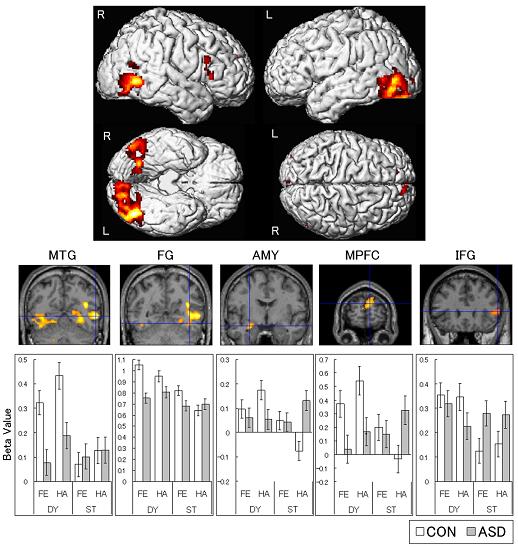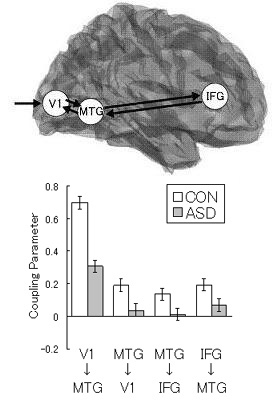SATO Wataru Laboratory
Impaired social brain network for processing dynamic facial expressions in autism spectrum disorders
(Sato*, Toichi*, Uono, & Kochiyama (* equal contributors): BMC Neurosci)
Background:
Impairment of social interaction via facial expressions represents a core clinical feature of autism spectrum disorders (ASD).
However, the neural correlates of this dysfunction remain unidentified.
Because this dysfunction is manifested in real situations, we hypothesized that the observation of dynamic, compared with static, facial expressions would reveal abnormal brain functioning in individuals with ASD.
Methods:
We presented dynamic and static facial expressions of fear and happiness to individuals with high-functioning ASD and to age- and sex-matched typically developing controls and recorded their brain activities using functional magnetic resonance imaging (fMRI).
Results:
Regional analysis revealed reduced activation of several brain regions in the ASD group compared with controls in response to dynamic versus static facial expressions, including the middle temporal gyrus (MTG), fusiform gyrus, amygdala, medial prefrontal cortex, and inferior frontal gyrus (IFG).

Dynamic causal modeling analyses revealed that bi-directional effective connectivity involving the primary visual cortex-MTG-IFG circuit was enhanced in response to dynamic as compared with static facial expressions in the control group.
Group comparisons revealed that all these modulatory effects were weaker in the ASD group than in the control group.

Conclusions:
These results suggest that weak activity and connectivity of the social brain network underlie the impairment in social interaction involving dynamic facial expressions in individuals with ASD.
Return to
Recent Research.
Return to
Main Menu.

